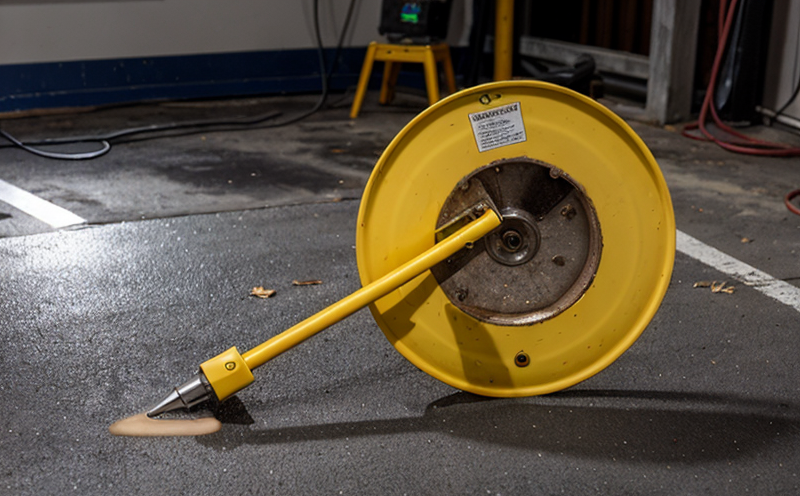ASTM E1032 Radiographic Examination of Aluminum AM Parts
The ASTM E1032 standard provides a method to evaluate the structural integrity and internal quality of aluminum parts produced through additive manufacturing (AM) processes. This non-destructive evaluation technique is particularly valuable for ensuring compliance with industry standards, enhancing product reliability, and addressing critical applications where part failure could lead to catastrophic consequences.
The ASTM E1032 radiographic examination involves the use of a controlled radiation source to produce an image of internal defects within the AM parts. This process allows quality managers, compliance officers, R&D engineers, and procurement professionals to identify flaws such as porosity, cracks, incomplete penetration, and other imperfections that could affect part performance.
Aluminum parts fabricated using AM technologies are subject to stringent testing requirements due to their complex geometries and the critical nature of many end-use applications. By employing ASTM E1032 radiography, manufacturers can ensure that these parts meet the necessary quality standards without compromising on design or functionality.
The test procedure outlined in ASTM E1032 specifies detailed parameters for specimen preparation, exposure conditions, film processing, and evaluation criteria to produce a reliable assessment. This ensures consistent results across different testing environments and laboratories, thereby facilitating accurate interpretation of radiographic images.
A key aspect of the ASTM E1032 standard is its emphasis on achieving optimal contrast between the part's structure and any defects present. This requires careful selection of radiation energy levels, appropriate film types, and proper positioning of the specimen relative to the source and detector. Proper calibration and validation of equipment are also critical for ensuring accurate results.
The ASTM E1032 radiographic examination process involves several steps: first, the AM part is cleaned thoroughly to remove any contaminants that could interfere with the imaging process. Next, the part is positioned in a way that allows all relevant areas to be examined effectively. Once positioned, an appropriate radiation source is applied, and images are captured using sensitive film or digital detectors.
After acquiring the initial set of radiographs, they must undergo careful analysis to assess the presence of any defects. This involves comparing each image against established acceptance criteria specified in ASTM E1032. These criteria typically define permissible levels of imperfections based on defect size, location, and type.
The final step is generating a comprehensive report summarizing the findings from the radiographic examination. This document includes detailed descriptions of any defects detected along with their locations and sizes. Additionally, it provides recommendations for addressing these issues if necessary or confirming that the parts meet all required specifications.
| Step | Action |
|---|---|
| 1 | Clean AM part thoroughly |
| 2 | Position part appropriately for examination |
| 3 | Apply radiation source and capture images |
| 4 | Analyze captured radiographs against acceptance criteria |
| 5 | Generate detailed report summarizing results |
The ASTM E1032 radiographic examination plays a crucial role in maintaining high-quality standards for aluminum parts manufactured via AM processes. By adhering to this standardized procedure, manufacturers can ensure consistent quality control throughout the production cycle while meeting regulatory requirements and customer expectations.
| Defect Type | Description |
|---|---|
| Porosity | Holes or voids within the material structure |
| Cracks | Splintering along grain boundaries or other planes |
| Incomplete Penetration | Failure to fully weld adjacent layers during AM |
| Fissures | Cracking due to thermal stresses post-processing |
Benefits
- Promotes consistent quality assurance across manufacturing processes.
- Ensures compliance with international standards and regulations.
- Aids in identifying potential flaws early in the production cycle.
- Enhances overall product reliability by eliminating weak points.
- Supports continuous improvement initiatives through detailed defect analysis.
- Maintains confidence among end-users regarding part integrity.
Industry Applications
The ASTM E1032 radiographic examination is widely utilized in various sectors where aluminum AM parts play a critical role. Some key applications include aerospace, automotive, medical devices, and consumer electronics industries.
| Sector | Application |
|---|---|
| Aerospace | Structural components for aircraft frames |
| Automotive | Racing car chassis and suspension systems |
| Medical Devices | Biocompatible implants and surgical tools |
| Consumer Electronics | Precision components for smartphones and wearables
In each of these sectors, the ability to perform accurate radiographic examinations is paramount. It ensures that even in highly complex geometries like those found in AM parts, internal quality remains uncompromised.
International Acceptance and Recognition
The ASTM E1032 standard has gained widespread acceptance globally due to its rigorous methodology and emphasis on reproducibility. Many countries have adopted this practice as part of their national standards for AM quality assurance.
- Aerospace industry associations worldwide recognize the importance of ASTM E1032 compliance.
- Automotive manufacturers utilize this method during supplier audits to verify adherence to strict quality controls.
- Medical device regulatory bodies often require proof of ASTM E1032 testing before approving new products for market entry.
This international recognition underscores the significance of maintaining high-quality standards through standardized radiographic examinations like those specified in ASTM E1032.





